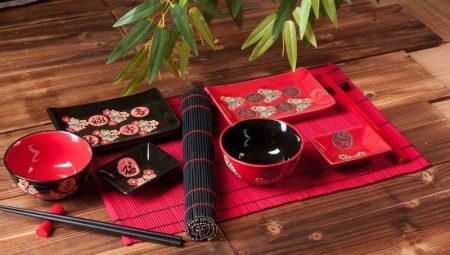The word "sushi" adapted in Russian has long been familiar to the Japanese. In Japanese, this delicious dish is called "sushi." Fans of oriental cuisine go to restaurants and sushi bars not only for food, but also for a special atmosphere. Those who just want a delicious meal - order an oriental dish at home. But for those who want to treat their guests at home in the spirit of oriental traditions, it is necessary to take care of purchasing dishes for sushi and rolls. Why is it necessary to buy special dishes for a particular dish? It's all about historical traditions.
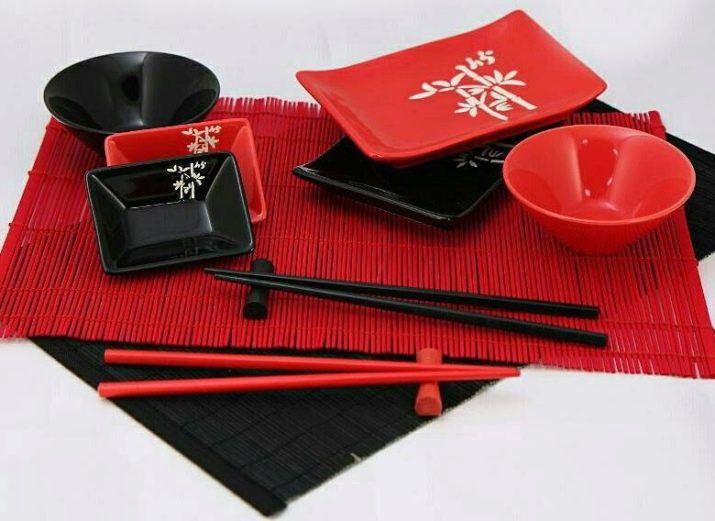
A bit of history
Today, such dishes are often made of porcelain. In Japan, it appeared in the 17th century, was a luxury item and at first simply copied Korean and Chinese designs. Many people wanted to look at the dishes themselves more than treat themselves to dishes from it.
And until now, this kitchen utensil is not just a collection of varied plates, but a work of art, a whole composition in which each item in its place.
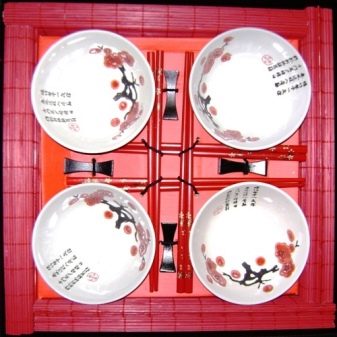
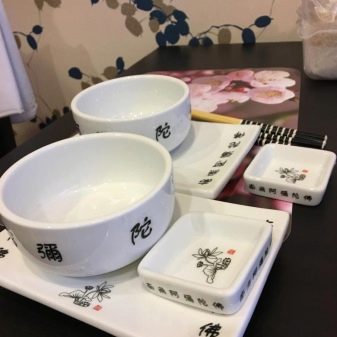
And all because for the Japanese, eating is a ritual designed to create harmony. Everything is important here: beautiful dishes, serving, the freshest products, special aesthetics in the design of the dish itself. Each meal begins with thanksgiving, and ends with it. Eating is a philosophy, and it does not endure haste. And it is the dishes that create an additional mood for a wonderful pastime.
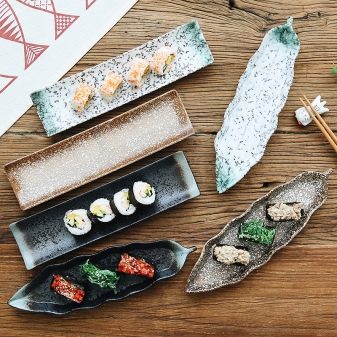
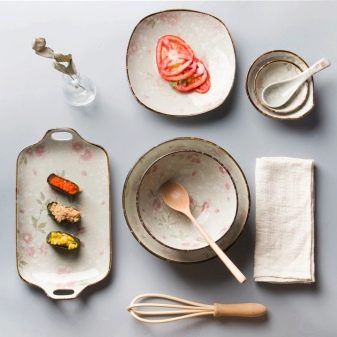
Features
Speaking about the pros and cons of using sushi sets at home, it should be noted that porcelain is often replaced with ceramic products. The reason is practical: porcelain is a fragile material. But it is environmentally friendly, durable with careful handling, it is convenient to store. Bone china is more refined, airy, translucent, while more durable.But for this you have to pay a much higher price. And looking after him is harder.
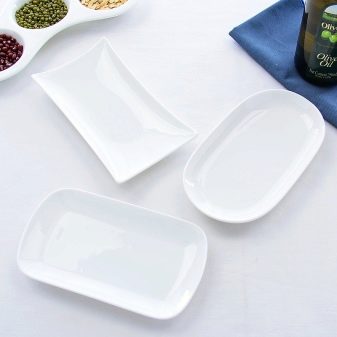
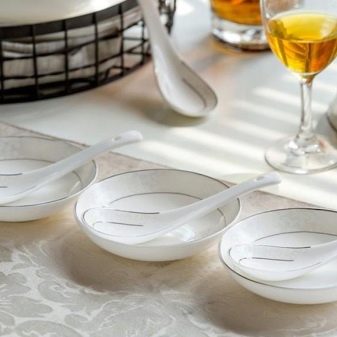
Ceramics are heavier, more massive, but this does not prevent it from being beautiful. It does not emit harmful substances, is not able to withstand temperature changes, although for land it is irrelevant. The disadvantage of ceramics is the porosity of the structure, which makes it not protected from impacts. Therefore, many choose glass-ceramic dishes, which are lighter than porcelain, it is impact-resistant, and it is easy to care for.
The modern trend is dishes made of melamine - a synthetic polymer. In terms of practicality, this is a very good acquisition, but many are confused by the issue of safe use for health. Manufacturers claim that quality melamine utensils, confirmed by certificates, are absolutely safe.
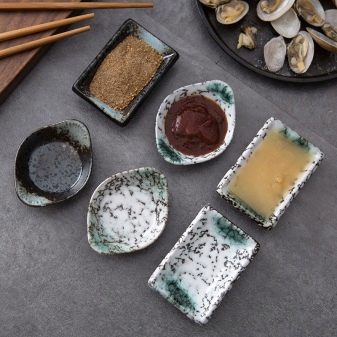
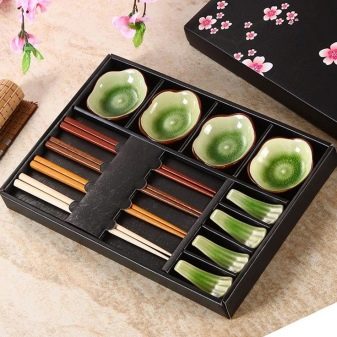
Another feature is the color of the dishes according to tradition. The painting will be a lot of white, red, green. There are beige and brown shades. But almost the main thing is black. Often it contrasts with the color of the table, other dishes and looks unusually beautiful. The combination in the figure with other colors makes the serving festive. The psychological aspect is also important here: they eat less food from black dishes than from a white plate.

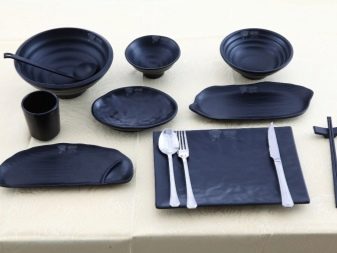
And Feng Shui experts say that the black color will make you calmer and more sensible. But black dishes, especially glossy ones, should always be perfectly clean: no streaks, dust or chips.
Varieties
Dishes for sushi are not only plates for serving dishes, but also containers for its preparation. In order to properly boil rice, you will need a thick-walled pan such as a cauldron. Rolls can be formed using a bamboo mat or special shapes. They can be plastic or wooden. By laying them in the elevator, rice and filling, you can create smooth cylinders that are easy to cut with the help of special notches. Today, manufacturers offer not only round shapes, but also rectangular ones in the form of stars, hearts, squares and flowers.
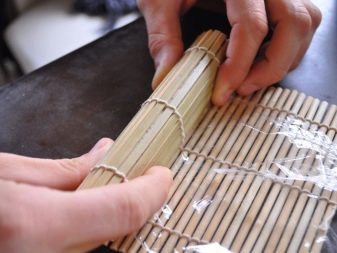
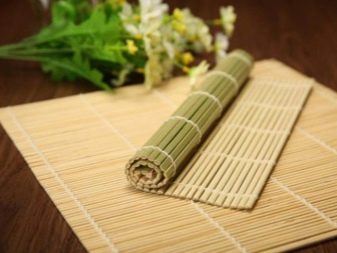
In order to properly and beautifully serve sushi, rolls, sashimi, you will need the following dishes.
- Sashimizara - a plate with partitions for various types of sushi, rolls, sashimi, sauces, salads (scissors); it can be individual or general, if it is large.
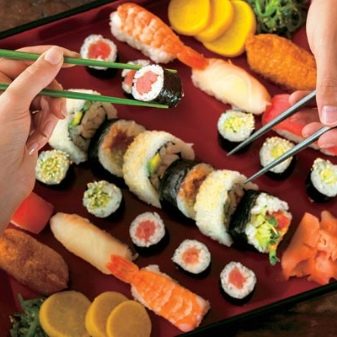
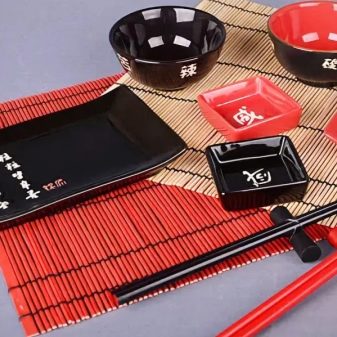
- As serving plates can act sushioke (porcelain or ceramic, but always varnished) and tamaki-dai or geta - wooden leg supports. The former often serve sushi, the latter - rolls, but this is an optional distinction. Sashimi bun also serve as portioned plates.
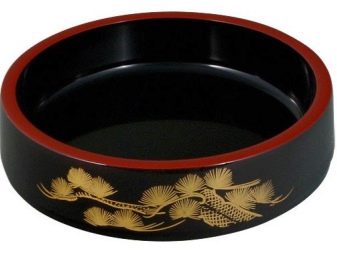
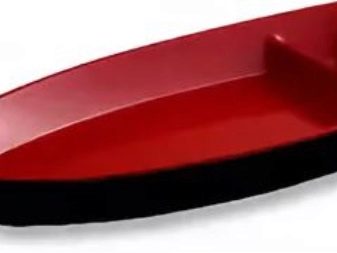
- Japanese gravy boats (seyzuyura), like sushioke, they have a square, rectangular, oval, rhomboid shape without sharp angles. They are low, used for soy sauce or wasabi, here you can put pickled ginger.
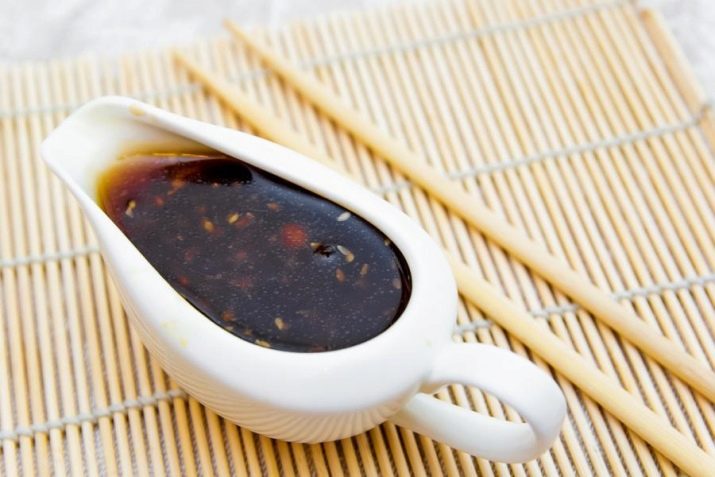
- You can add the sauce from katakuti (bowls with a nose).
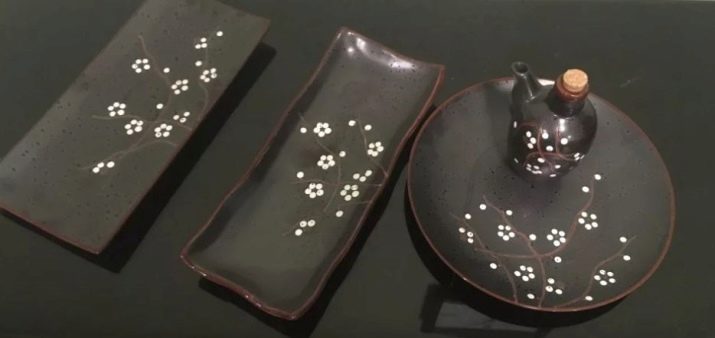
- Reusable sticks (saibashi, nuribashi) Ivory, sandalwood, and other expensive materials are put on a special stand - Hashioki - during a meal. Disposable sticks (varibashi) made of wood can also be placed on a stand or on a bamboo napkin or table.
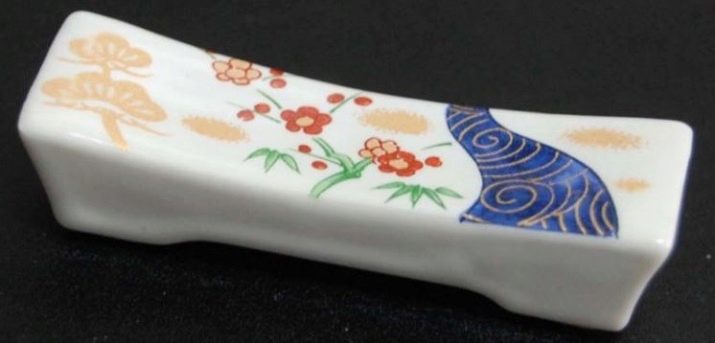
- There are special containers for Japanese takeaway dishes. They are called makonouchi bento and are casket-scissors from 5-6 compartments.
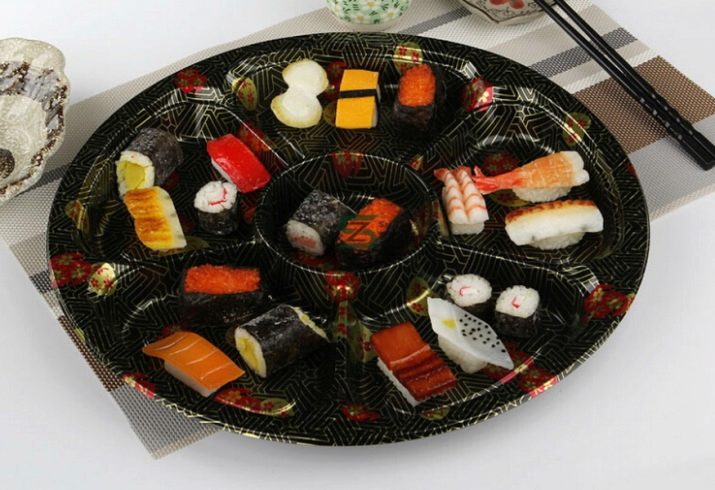
But meeting guests is unlikely to cost only these traditional dishes. Therefore, you may need a bottle of brine for sake and a cup for drinking this drink - otochok (edema). In the country of vegetable lovers, vegetable salads are always on the table: fresh, pickled or canned. Such dishes are served in bowls of Kozar and Kobach. And all this is appropriate when taking sushi and rolls.
Thus, dishes for sushi are peculiar in form, capacity, and functionality. And in order to organize dinner, for example, for 4 persons, you will need:
- 4 sushioke (required) + 4 tamaki-dai or geta (if possible);
- sashimizara (if you want to have a common dish);
- 4 pairs of disposable or reusable hashi;
- 4 hashioki;
- 4 bamboo napkins;
- seyyuzaru for sauces, wasabi, ginger (if there is no sashimizara);
- comb and 4 points for sake;
- Kozar and kobachi for salads;
- if you plan to finish dinner with tea, then you will have to take care of the dishes for the tea ceremony.

Manufacturers Overview
It is not surprising that the main producers of sushi dishes are the countries of the East. But also in Italy, France, Russia there are enterprises producing such kitchen utensils. Price depends on material and brand. For example, the main brands of sushi china Rak Porcelain, Cameo, Churchill, Revol. These are well-known manufacturers supplying their products not only for the mass consumer, but also for sushi bars and restaurants, hotels and luxury hotel complexes.
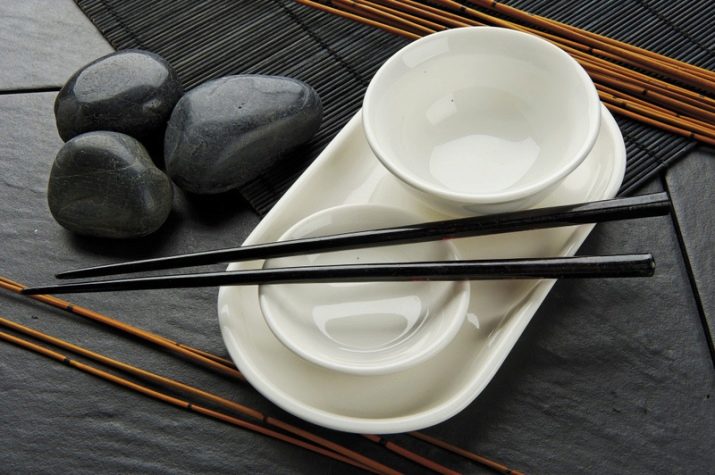
Bone China is prestigious to buy the following brands: Royal Crown Derby, Top Art Studio, Cameo. When choosing ceramic products, you should pay attention to brands Utopia, Jars, Oxford. The best glass-ceramic dishes are offered by companies Bormioli Rocco, Arcoroc.
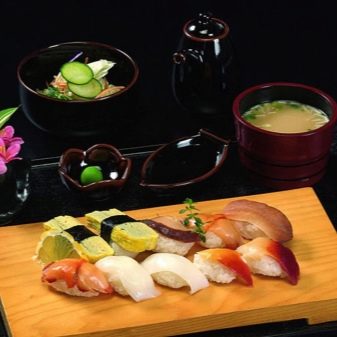
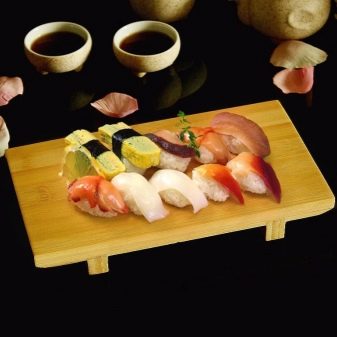
Chinese company PuTian Machinery offers a huge selection of individual items for making and receiving sushi, as well as sets. The manufacturer works with earthenware and offers dishes of different price categories.
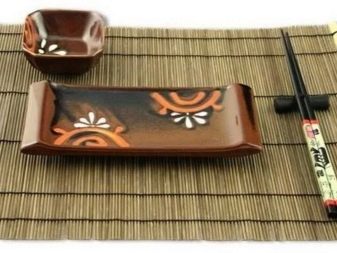
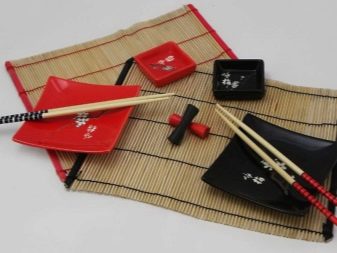
Russian company M-Plastic offers sets of 5-10 items at a fairly affordable price. The Fissman brand is registered in Denmark, but China manufactures fine ceramic sushi sets under this brand. This company, by the way, has a large selection of sets for a different number of items and persons.
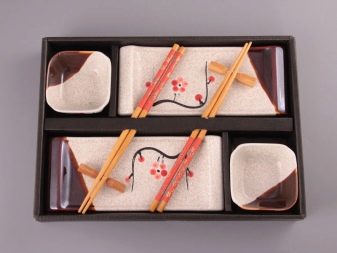
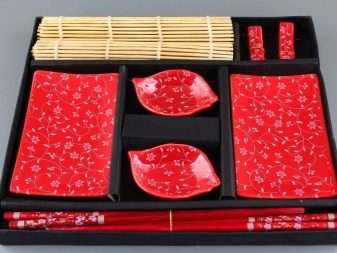
Trademark Ever unison offers sets and individual items (plates, gravy boats and so on) from 100% melamine. This modern direction has been developed in other companies, because such products are strong, reliable, durable. The range of sushi products for this brand is simply huge. The diverse shape and color palette also make you pay attention to Ever Unison.
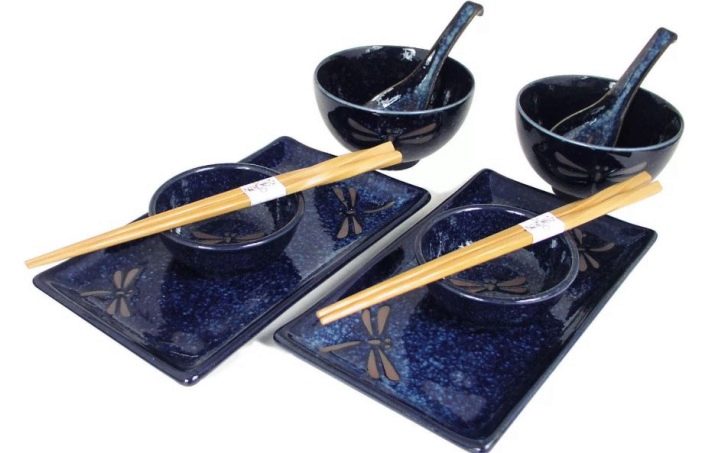
How to choose?
In stores and the Internet you can buy ready-made sets or individual items. The charm of the set is not only in completeness, but also in a single style and color scheme. The set can be for 2 - 4 - 6 - 8 people. When choosing, it is worth paying attention to:
- the material of plates and related dishes;
- the material from which the sticks are made;
- the presence of a mat for the preparation of rolls;
- completeness.
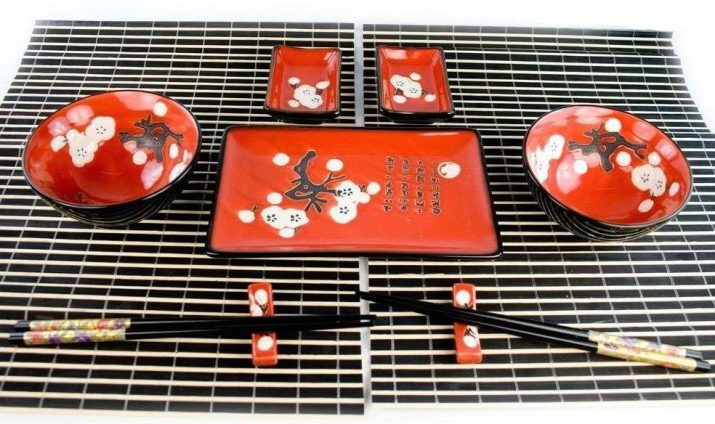
It's minimum. Hashioka will be quite useful. The set may include sashimizara. If it is not, then it is better to purchase separately, as this common dish will help create a closer, more friendly atmosphere at the table. In a wider configuration, dishes for sake are found. There are kits that include nori sheets, as well as sushi rice, rice vinegar, and soy sauce.
Such a complete set will be a great gift for both beginner sushi and more experienced sushi masters.
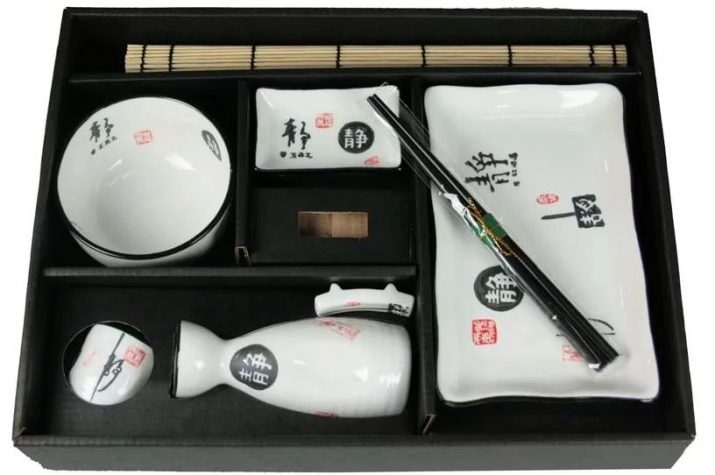
Care Features
Speaking about the features of caring for dishes for sushi, it is worth starting with a pan for cooking rice. Usually this is a cast-iron cauldron, which must be very carefully looked after: after use, it must be washed well without the use of metal brushes and strong abrasive detergents, turned over or wiped dry. Violation of these measures will lead to the appearance of rusty bald spots. Such a pan can no longer be used for cooking.
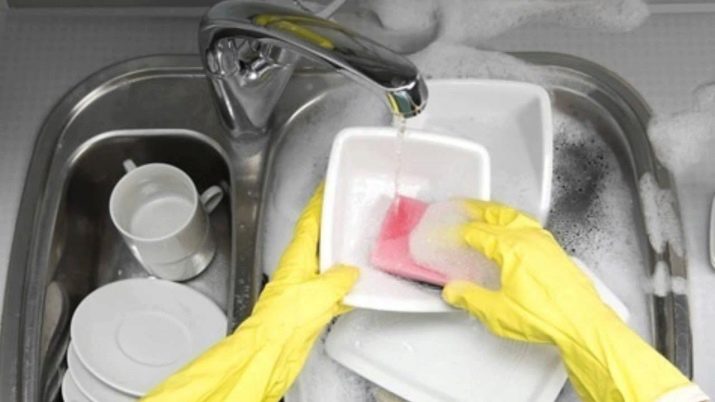
Although the mat (makisa) for making rolls is not dishes, but it is in it that the cylinders are molded before cutting. Of all the items for cooking and receiving sushi and rolls, it is the mat that requires the most care. Thin strips of bamboo fastened with cotton thread allow you to twist rice with filling and nori into a roll. For better preservation of the mat, it is often wrapped with cling film, and nori or rice is already laid out on the film.
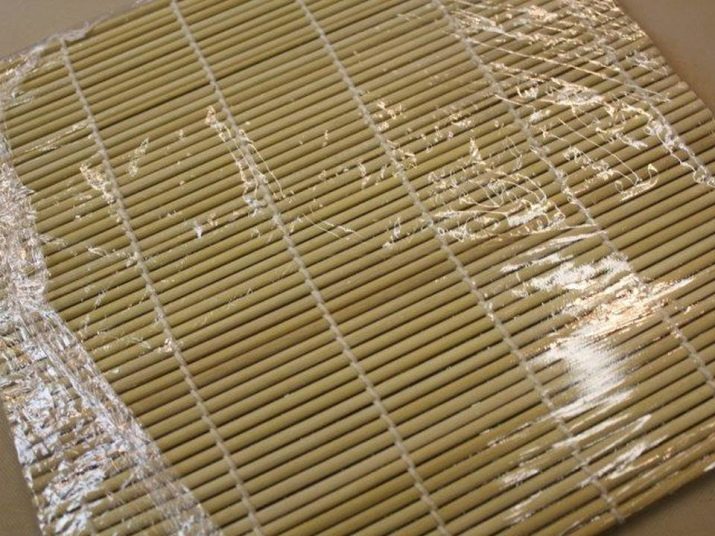
In any case, you need to thoroughly rinse the Makisa, if at least one picture remains in it. It is better to dry the mat horizontally in a warm place. Bamboo is a natural material.If you do not follow the rules for caring for him, then he quickly molds and decays. Care for the dishes themselves depends on its material. If it is easily breaking porcelain, ceramics, glass, then it is worth taking care of its safety as follows:
- porcelain or glazed ceramics should not be put in the dishwasher, it is better to wash by hand;
- fine porcelain should not be washed on weight; it is better to do this in a plastic container, on the bottom of which a soft towel is put;
- objects painted or glazed are washed with neutral soap, for example, for children;
- to add shine to the dishes and remove stains in water, add a few drops of ammonia;
- washing is carried out only with a soft sponge or cloth;
- painted dishes should not be left in the water for a long time: enamel will quickly crack;
- To make the dishes shine (especially dark), it is recommended to grind it with a soft cloth immediately after washing, until it is dry.
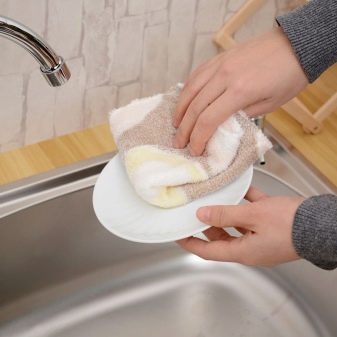

Melamine dishes should not be heated in the microwave, nor should acidic foods be stored in it. And care must be taken in the same way as glass, porcelain, and ceramics. You can also use a dishwasher.
See how to choose the right dish for sushi in the next video.
